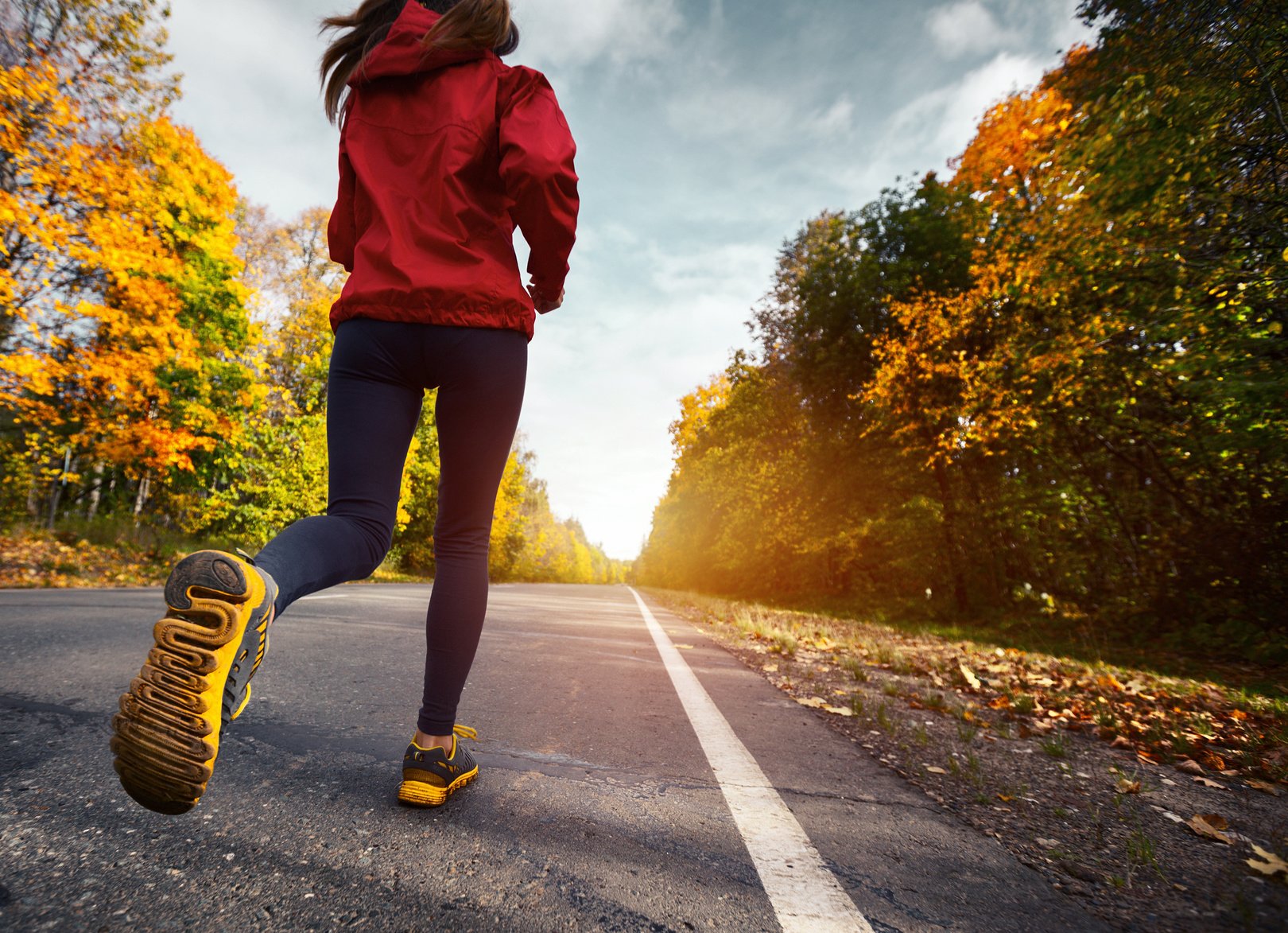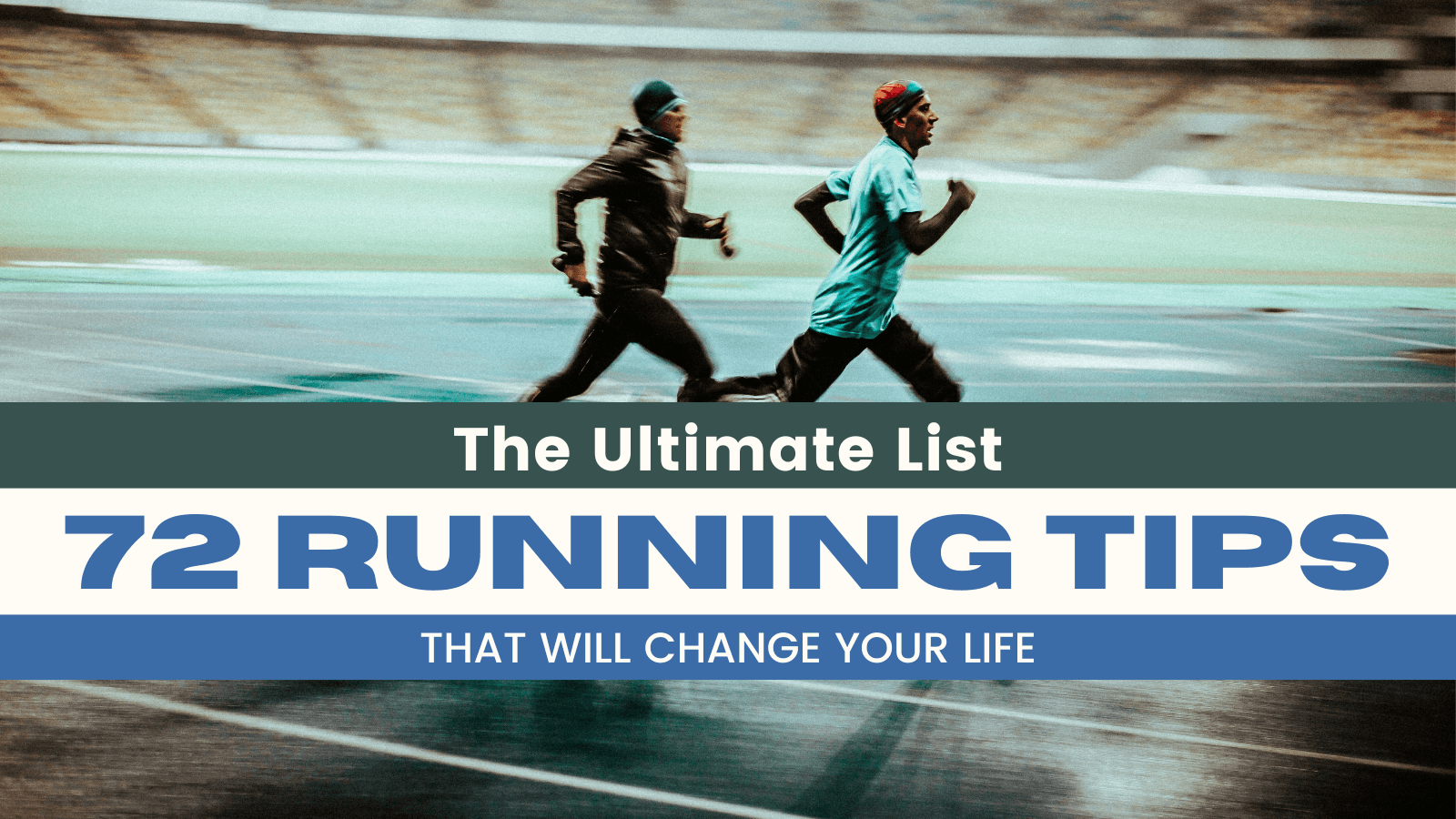Have you ever experienced that sudden, fluttering sensation in your chest while you’re out on a run?
Yep, I’m talking about heart palpitations.
It’s like your heart decides to bust a move and go all out of rhythm. Don’t worry, my friend, you’re in the right place. We’re about to dive into the realm of heart palpitations and uncover some valuable insights.
Here’s the deal—heart palpitations during running are more common than you might think. For most runners, they’re an occasional hiccup in the rhythm of their cardiovascular symphony. But hey, before you start panicking, let me assure you that in most cases, they’re nothing to lose sleep over.
While heart palpitations can raise some valid concerns, they are typically harmless. Yep, you heard that right. They’re like the occasional blip on your running radar. However, it’s always wise to consult with your doctor just to be on the safe side. Remember, I’m just a fellow runner sharing my experiences, not a medical expert.
Now, let’s dive into the nitty-gritty. What exactly are heart palpitations? How do they happen? And most importantly, what can you do about them? We’ll explore all of that and more in this blog post.
So, lace up your running shoes, take a deep breath, and let’s hit the ground running!
What Are Heart Palpitations?
Heart palpitations are basically when your heart decides to break free from its usual rhythm and go on a rebellious spree. It’s like your heart is saying, “Hey, I’m gonna beat to my own drum today!” And boy, can it catch you off guard.
These palpitations can manifest differently for each runner. It’s like a personalized heart symphony. Some of you might feel a wonky pulse, as if your heart is doing a funky dance routine. Others might experience that unsettling flip-flopping sensation in the chest. And let’s not forget about the not-so-fun extras like chest pain, discomfort, shortness of breath, and that terrifying feeling that your heart might just call it quits and leave you in the dust. Trust me, it’s a rollercoaster of emotions.
But hold on tight, because here’s the good news: Heart palpitations, for the most part, aren’t the ultimate party crashers. They’re usually harmless and tend to settle down on their own. Phew! Take a deep breath and let that sink in. However, it’s important to note that in some cases, heart palpitations can be a red flag, warning of potential dangers lurking beneath the surface.
Palpitations Gone Bad
In some exceptional cases, heart palpitation can be a warning sign of a more serious heart condition, such as an abnormal heart rhythm (arrhythmia) or an overactive thyroid gland (hyperthyroidism).
That’s why you need to consult with your doctor if the palpitations won’t go away even after taking some of the preventative steps.
Severe Symptoms
If you ever find yourself experiencing heart palpitations accompanied by some serious symptoms like passing out, feeling lightheaded to the extreme, enduring chest pain that could rival a sledgehammer blow, or fainting like a damsel in distress, don’t hesitate—seek immediate medical help. Seriously, don’t brush it off like a minor inconvenience. Your health is too important to take any chances.
Once you arrive at the doctor’s office, they’ll dig deep into your medical history. They’ll give you the 411 on your current medication, diet, and lifestyle, because every clue matters. But that’s not all—brace yourself for more than a few tests.
These tests aim to confirm or rule out any underlying causes of your heart palpitations. Expect a thorough examination of your heart and lungs, with an ECG giving them a glimpse into the electric symphony happening inside your chest.
Blood work will be involved too, searching for any sneaky imbalances or abnormalities that might be pulling the strings behind the scenes. And if things get real intense, they might even whip out an ultrasound of your heart, strap you onto a treadmill for a workout you didn’t sign up for, or dive into some complicated blood tests that will make you appreciate the complexity of your own body.
Now, I know all of this might sound like a marathon of medical exams, but trust me, it’s worth it. Your health is no joke, and it’s better to be safe than sorry. Don’t make the mistake of lacing up those running shoes when you should be making a beeline for the hospital instead. Let the professionals work their magic and uncover any hidden truths before they have a chance to wreak havoc on your well-being.
Additional guide – Running With Seasonal Allergies
Causes of Heart Palpitations While Running
Let’s talk about the pounding sensation in your chest while you’re out there conquering those miles. Don’t fret, my friend, because an increase in heart rate during exercise is as normal as a sunny day in summer. It’s your body’s way of saying, “Hey, I need to pump more blood to those hardworking muscles!”
But hold on a sec. If you’re experiencing heart palpitations that go beyond the usual beat, it’s time to delve into the possible culprits. Let’s shine a light on some common triggers that can make your heart dance to an irregular rhythm:
Too Much Stimulants
First on the list are those sneaky stimulants that can throw your heart into a jittery frenzy. Think alcohol, chocolate (yes, even our beloved treat!), and caffeine. They may give you a temporary boost, but they can also make your heart go wild if you’re sensitive to their effects.
Heavy Food
You’ve just enjoyed a hearty feast of carb-loaded goodness or indulged in a sugary, fatty delight. Your body is working hard to digest all that deliciousness, and when you decide to lace up your running shoes right after, your heart might not appreciate the extra workload. Oh, and be cautious with foods high in monosodium glutamate (MSG), sodium, or nitrate—they might join the party of palpitations too.
Emotional Turmoil
Stress and anxiety—we’ve all been there, right? Running can be a fantastic stress-buster, but if you’re already feeling overwhelmed, your heart might protest with some palpitations. It’s like trying to sing a sweet melody while a marching band blares its horns right next to you. Keep an eye on your stress levels and find ways to manage them, so your heart can find its rhythm once again.
Hormones
Ladies, this one’s for you. Hormonal changes during menstruation and pregnancy can sometimes throw your heart for a loop. Your body is going through some incredible transformations, and your heart is along for the ride. It’s just a temporary detour, but if the palpitations become too bothersome, consult with your doctor for some expert guidance.
OTC Medicine
Watch out for over-the-counter medications too an unexpected jolt. And those diet pills or medications high in stimulants? They might rev up your heart rate like a race car hitting the gas pedal.
Intense Exercise
Now, imagine running at high elevation or pushing yourself to the limits with intense, hardcore workouts. Your heart might be a bit startled, wondering, “Wait, we’re at this altitude? And we’re running how fast? Hold on tight!” Give yourself some time to adapt and gradually increase your intensity.
The above are some of the most common causes of heart palpitations in runners, but the list is by no means complete. For a deeper dive into your own condition, it’s always better to consult a doctor. I hate to sound like a broken record but nothing beats a thorough exam by a professional. The internet can only help you this far.

How to Prevent Heart Palpitations While Running
There are so many strategies you can follow to stop (and prevent future) heart palpitations on the run.
Some of these prevention strategies include:
1. Hydration
Researchers have delved into the magical world of hydration and found a captivating connection to those pesky palpitations we’ve been talking about. Turns out, if you’re dehydrated, your heart might start throwing a tantrum, leading to palpitations and a whole lot of other trouble.
We don’t want that, do we?
So, here’s the secret to maintaining a happy, well-hydrated body: Make water your best friend. Throughout the day, ensure you’re sipping on that liquid gold to keep your body’s hydration levels in check. And guess what? Before lacing up those running shoes, quench your thirst with a refreshing 4 to 6 ounces of water about half an hour prior to your run. It’s like giving your body a gentle reminder that it’s time to hydrate and conquer the miles ahead.
Now, when it comes to longer runs, my friend, especially during those scorching summer days, it’s essential to bring along your trusty sidekick—a water bottle. Treat it like a loyal companion that’ll be by your side, quenching your thirst mile after mile. Aim to sip on that life-giving elixir during your 45-minute (or longer) adventures, ensuring your body stays hydrated and your heart keeps up the beat.
Additional Resource – Here’s your guide to the Maffetone Method.
2. Decrease Stress
Let’s talk about stress, my friend. It’s like an unwelcome guest that overstays its welcome and wreaks havoc on our well-being. But fear not, for I have a secret weapon that’ll help you bid farewell to stress and reclaim your inner peace. Are you ready? Here it is: stress reduction practices!
Imagine a world where stress is no longer calling the shots in your life. A world where heart palpitations take a backseat as you embrace tranquility and find your inner Zen. It’s not just a dream—it’s a reality waiting to unfold. Researchers and experts have uncovered the remarkable benefits of stress-reduction practices, and trust me, they’re backed by science!
First up, we have relaxation exercises that can work wonders. Picture yourself practicing Yoga Nidra, a form of deep relaxation that can transport you to a blissful state of calmness. Or perhaps you find solace in the gentle movements of yoga, the serene stillness of meditation, or the graceful flow of tai chi. It’s like giving your mind and body a soothing massage, releasing tension and leaving you feeling rejuvenated.
But wait, there’s more! Guided imagery, self-hypnosis, biofeedback, and aromatherapy are additional tools in your stress-busting arsenal. They offer unique ways to tap into your inner reservoir of peace and channel it into your daily life. Choose the practice that resonates with you the most, and make it your loyal companion on this journey towards serenity.
Now, my friend, stress doesn’t just magically disappear by practicing relaxation exercises alone. We must also tackle the sources of stress head-on. Whether it’s those demanding work deadlines or the chaos of family life, identify the triggers and explore strategies to navigate them. Seek balance, set boundaries, and prioritize self-care. Remember, you have the power to create a life that’s free from the clutches of stress.
Additional resource – Your guide to heart rate variability
3. Breathe Deep to Relax
Picture yourself in this scenario. Your heart is racing, your mind is racing, and it feels like chaos has taken over. But you have a secret weapon—deep breathing. It’s a simple yet powerful technique that can work wonders in reducing anxiety and calming your racing heart.
Take a moment to slow down.
Breathe deeply from your diaphragm, allowing your belly to rise and fall with each breath. Feel the tension melt away as you consciously relax your body from head to toe.
Studies have shown that deep breathing can have a profound impact on our nervous system, triggering the relaxation response and helping to restore balance. It’s like pressing the reset button for your body and mind. So, the next time those palpitations come knocking, don’t rush around in a frenzy of terror. Take a breath, find your calm, and embrace the power of the present moment.
- The Valsalva Maneuver
When your heart is putting on a noisy performance, it can be challenging to find your inner Zen with just deep breathing. But fear not, for I have a secret technique up my sleeve that might just do the trick. Enter Vagus nerve massage!
Research has shown that massaging your Vagus nerve, the mighty controller of heart rate, can work wonders in putting those palpitations to a screeching halt.
By stimulating the Vagus nerve, you’re essentially sending a signal to your heart, telling it to calm down and find its rhythm once again. It’s like having a magical remote control for your heart, ready to switch off the unwanted noise. So, let me introduce you to a technique called the Valsalva maneuver—it’s simple yet oh-so-effective.
Are you ready to give it a try? Here’s how it goes: First, pinch your nose shut and close your mouth. Now, take a deep breath in, and as you exhale, imagine you’re blowing up a balloon with all your might. Feel the pressure building up in your chest as you push that air out forcefully.
5. Get your Electrolytes
Imagine your heart as a finely tuned orchestra, playing a symphony of beats to keep you going. But like any musical ensemble, this masterpiece requires the right balance of elements to create harmonious rhythms. In the case of your heart, these essential elements are known as electrolytes—calcium, potassium, magnesium, and sodium.
Research has shown that an imbalance in these vital electrolytes, whether it’s an excess or a deficiency, can lead to those pesky palpitations. It’s like throwing the conductor off balance, causing the music to falter. But fear not, my friend, for there’s a way to restore the harmony.
To ensure your electrolytes are in perfect balance, a simple blood or urine test can do the trick. This will reveal if there’s an imbalance that needs to be addressed. And who better to guide you through this symphony of electrolytes than your trusted doctor? They can provide expert advice on how to restore these essential elements back to their rightful places.
Now, let’s take a closer look at the foods that can help you conduct this delicate balancing act.
First up, we have calcium—the maestro of strong bones and steady heartbeats. Almonds, beans, vibrant vegetables, and a chorus of fruits all play their part in providing this essential mineral.
Next, potassium takes the stage, known for its role in maintaining healthy blood pressure and heart function. Behold the mighty banana, accompanied by the soothing melodies of milk, apples, and sweet raisins.
Magnesium steps forward with its calming presence, lending its talents to promote relaxation and support proper muscle function. Joining the ensemble are peanut butter, nuts, the smooth notes of milk and yogurt, and the nourishing hum of cooked soybeans.
Lastly, sodium makes its grand entrance, adding a dash of flavor and aiding in fluid balance. Meats sizzle with its essence, spices add their vibrant touch, and certain dairy products gracefully dance alongside.
6. Avoid the Diet Triggers
Just as you wouldn’t pour sticky syrup into the fuel tank of a high-performance sports car, you must be mindful of what you put into your body before a run to avoid any unpleasant surprises, like heart palpitations.
Let’s start with a common pitfall: running immediately after indulging in a heavy, carb-loaded, fat-filled feast. It’s like trying to sprint through a swamp of sluggishness. Your poor digestive system needs time to process and break down all that goodness (or not-so-goodness) you’ve consumed. Give it some breathing room, my friend. Aim for a generous window of two to three hours between your meal and your run. That way, you’ll be avoiding a collision course with disaster.
Ah, the seductive allure of caffeine—the energizing elixir that brings joy to countless souls. But for some, it may cause their heart to perform an impromptu drum solo during a run. If you suspect that caffeine is the mischievous culprit behind your heart palpitations, it’s wise to bid farewell to caffeinated beverages and treats like chocolate at least two to three hours before lacing up your running shoes.
Consider this a precautionary measure, an insurance policy to keep those heart flutters at bay. And don’t worry, my friend, you can still savor these delights on your non-running days, enjoying their delights without the fear of palpitation-induced surprises.
Additional resource – Heart murmurs in runners
7. Medication
If you find that the lifestyle changes we’ve discussed haven’t quite tamed those pesky heart palpitations during your runs, it might be time to have a heart-to-heart with your doctor about potential prescribed medications.
Now, before we delve into the realm of medicine, let me emphasize the importance of open and thorough communication with your trusted healthcare provider. They possess the knowledge and expertise to guide you on this path. Together, you can weigh the pros and cons, ensuring that any prescribed medications are a tailored fit for your unique situation.
When it comes to tackling heart palpitations, there are a couple of classes of medications that may come into play. One common option is beta-blockers, which work their magic by impeding the effect of adrenaline on your body. Think of them as traffic cops, skillfully directing the chaotic rush of adrenaline so that it doesn’t wreak havoc on your heart. Another possibility is calcium-channel blockers, which lend a helping hand in regulating the electrical impulses in your heart, keeping them in check and preventing those palpitations from stealing the spotlight.
Now, let’s be clear—medication should always be your last resort, a trusted ally to turn to when all else fails. It’s important to exhaust all lifestyle changes and non-medical approaches first. However, if you find yourself in a situation where heart palpitations persist and disrupt your running escapades for a prolonged period, don’t hesitate to explore this option with your doctor.
Heart Palpitations While Running – The Conclusion
There you have it. If you’re dealing with heart palpitations during or after running, then today’s post should put you on the right track.
The rest is just details.
Please feel free to leave your comments and questions below.
In the meantime thank you for dropping by.
David D.








































































